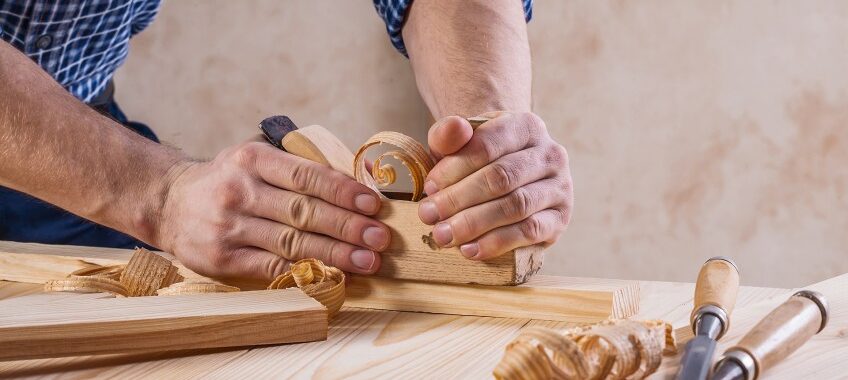Wood is a durable and versatile material, but to maximize its lifespan and maintain its appearance, proper treatment is essential. Wood treatment not only protects against environmental factors like moisture and UV rays but also enhances its natural beauty and durability. Here’s a guide to the most common wood treatment options and how they can preserve and enhance the durability of your wood projects.

1. Pressure Treatment
- What It Is: Pressure treatment involves infusing wood with preservatives under high pressure to protect it from decay, insects, and fungi.
- Best For: Outdoor structures such as decks, fences, and garden furniture.
- Advantages:
- Provides deep protection against moisture and pests.
- Extends the lifespan of wood used in high-exposure environments.
- Considerations:
- Treated wood may have a greenish tint, though it can be painted or stained.
- Some chemicals used in older treatments (like CCA) are toxic; modern treatments are safer but should still be handled with care.
2. Oil Finishes
- What It Is: Oil finishes penetrate the wood fibers to provide a natural, warm finish while offering protection against moisture.
- Types:
- Linseed Oil: Provides a durable finish but can yellow over time.
- Tung Oil: Offers a harder finish and resists water better than linseed oil.
- Danish Oil: A blend of oil and varnish, providing both penetration and surface protection.
- Best For: Furniture, cabinetry, and indoor woodwork.
- Advantages:
- Enhances the wood’s natural grain and color.
- Easy to apply and reapply as needed.
- Considerations:
- Requires regular maintenance and reapplication to maintain protection.
- Not as durable as varnishes or polyurethane for high-traffic areas.
3. Stains
- What It Is: Stains add color to the wood while also providing some level of protection against UV rays and moisture.
- Types:
- Water-Based Stains: Quick-drying and easy to clean up but may raise the wood grain.
- Oil-Based Stains: Penetrate deeper into the wood and provide richer color but have longer drying times.
- Gel Stains: Thicker consistency, ideal for vertical surfaces or for achieving a uniform finish on difficult woods.
- Best For: Exterior wood surfaces, furniture, and flooring.
- Advantages:
- Enhances the appearance by adding color and highlighting the grain.
- Provides UV protection and helps prevent fading.
- Considerations:
- Must be sealed with a topcoat for enhanced protection.
- Requires careful application to avoid blotching on some wood types.
4. Varnishes
- What It Is: Varnishes create a hard, protective layer on the surface of the wood, guarding against scratches, moisture, and UV damage.
- Types:
- Polyurethane: Highly durable, available in oil-based and water-based forms. Ideal for high-traffic areas.
- Spar Varnish: Flexible and UV-resistant, designed for outdoor use.
- Alkyd Varnish: Known for its durability and resistance to chemicals.
- Best For: Floors, outdoor furniture, doors, and trim.
- Advantages:
- Provides a glossy, durable finish that resists wear and tear.
- Enhances the natural beauty of the wood while offering long-lasting protection.
- Considerations:
- Can be more challenging to apply than oils or stains.
- Requires proper ventilation during application due to fumes (especially oil-based types).
5. Paints
- What It Is: Paint provides an opaque coating that covers the wood’s natural grain, offering excellent protection from the elements.
- Best For: Exterior siding, trim, and outdoor furniture.
- Advantages:
- Offers the best protection against moisture, UV rays, and wear.
- Wide variety of colors and finishes available.
- Considerations:
- Completely covers the wood grain, which may not be desirable for some projects.
- Requires proper surface preparation to ensure adhesion.
- May peel or chip over time, requiring maintenance.
6. Wood Preservatives
- What It Is: Wood preservatives are chemical treatments designed to protect wood from decay, rot, and insect damage.
- Types:
- Water-Repellent Preservatives: Combine a water repellent with a wood preservative, ideal for outdoor wood.
- Boron-Based Preservatives: Effective against wood-boring insects and fungi, often used in structural timber.
- Best For: Structural timber, outdoor wood, and wood exposed to moisture or pests.
- Advantages:
- Provides long-term protection against biological threats.
- Can be used in combination with other finishes (e.g., stains or paints).
- Considerations:
- Some preservatives can be toxic and require careful handling and application.
- May alter the appearance of the wood, depending on the type used.
7. Epoxy Treatments
- What It Is: Epoxy treatments involve applying a resin-based product to wood to fill voids, repair damage, and provide a waterproof barrier.
- Best For: Boat building, wood repair, and outdoor wood structures.
- Advantages:
- Extremely durable and waterproof, ideal for marine environments.
- Strengthens and stabilizes damaged or rotting wood.
- Considerations:
- Can be challenging to apply and requires precise mixing and curing.
- Must be covered with a UV-resistant finish if used outdoors, as epoxy can degrade under sunlight.
Conclusion
Choosing the right wood treatment is essential for preserving the durability and appearance of your wood projects. Whether you need protection against moisture, UV rays, or pests, there is a treatment option that fits your needs. Regular maintenance and reapplication of these treatments will ensure that your wood remains strong, beautiful, and long-lasting for years to come.


Leave A Comment